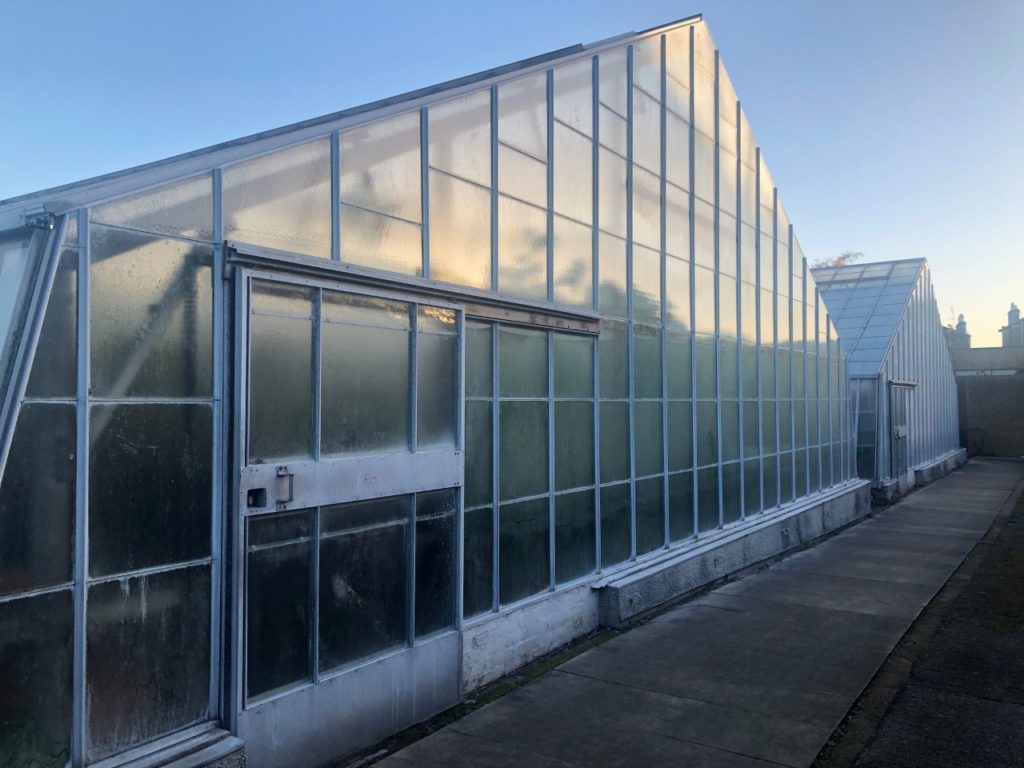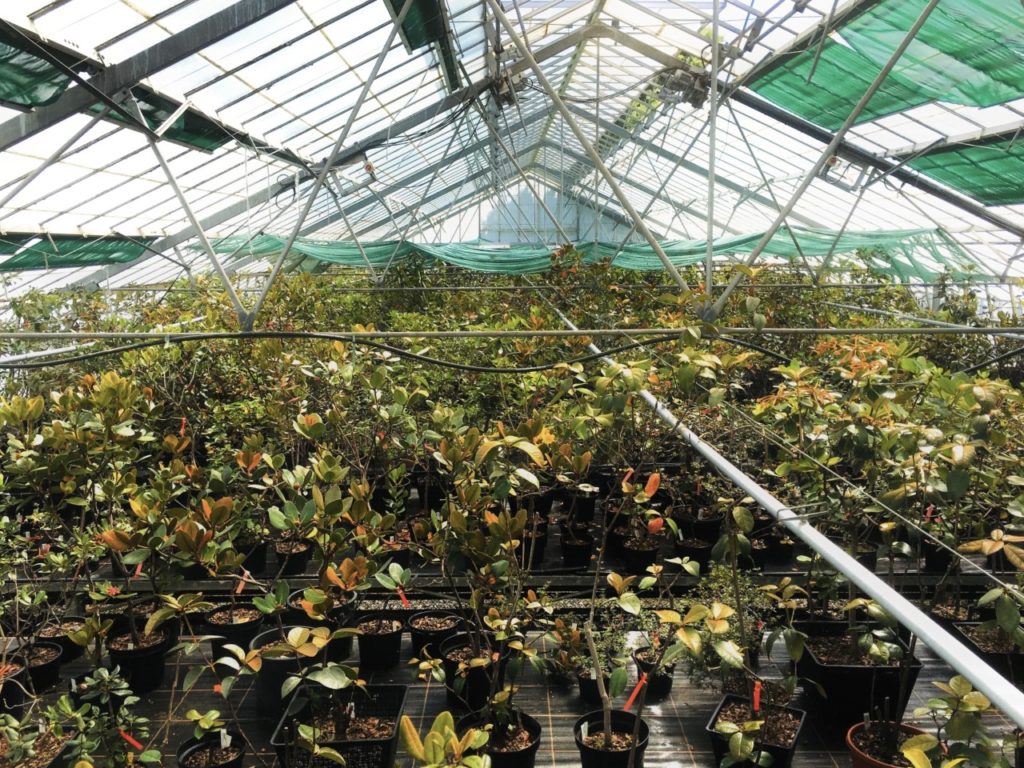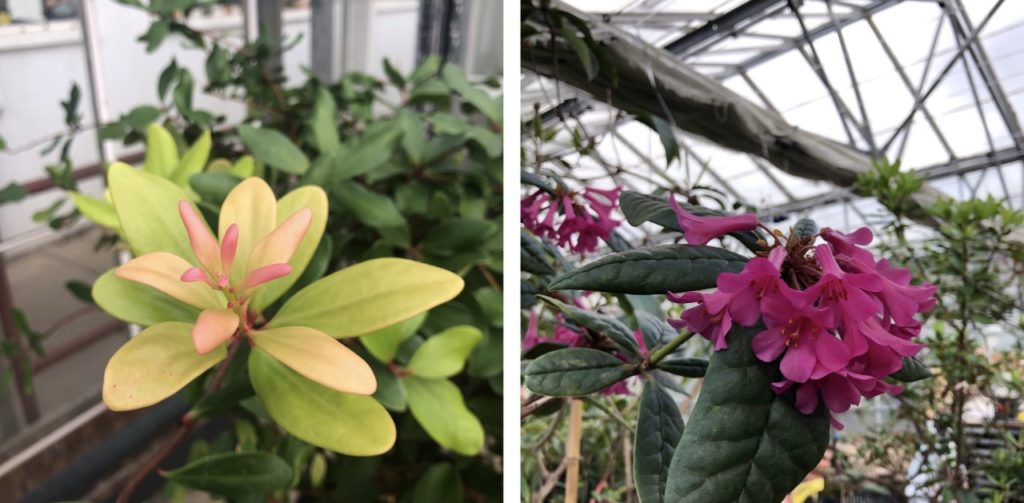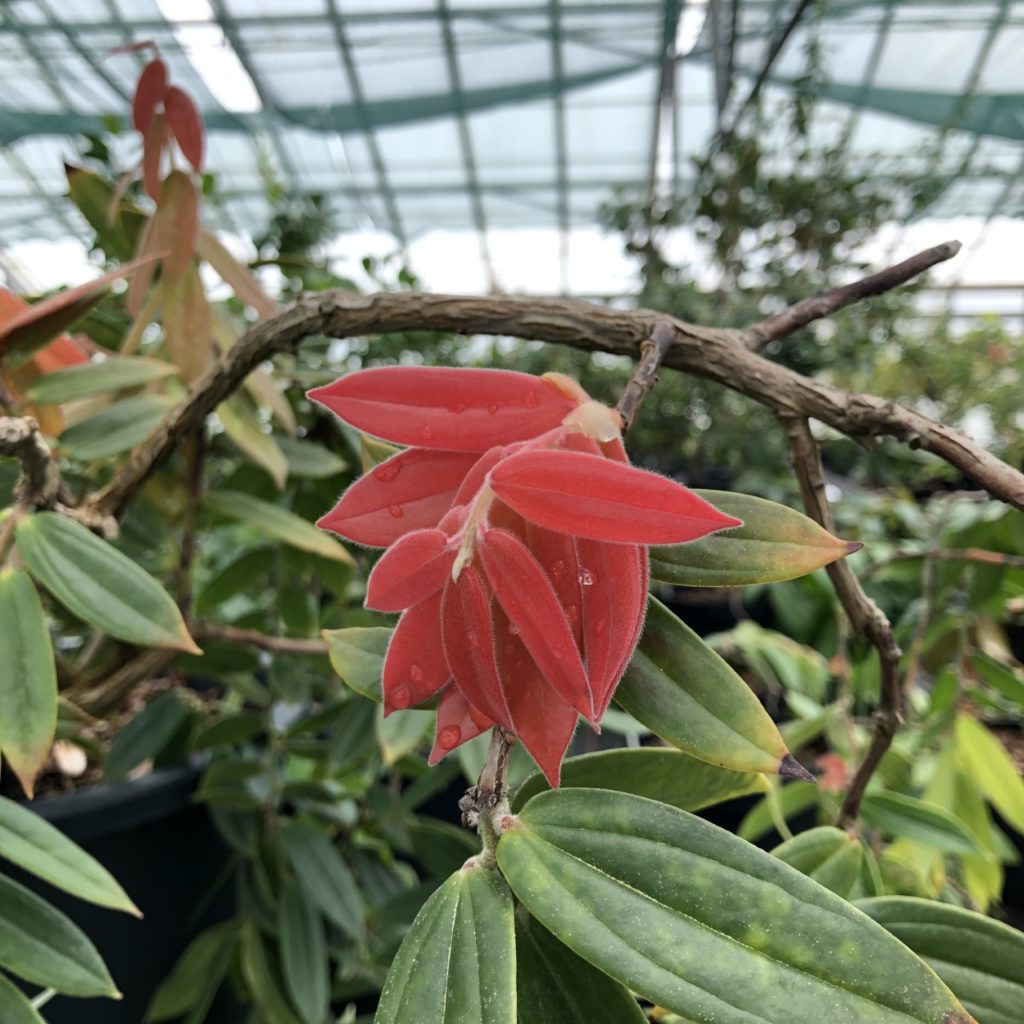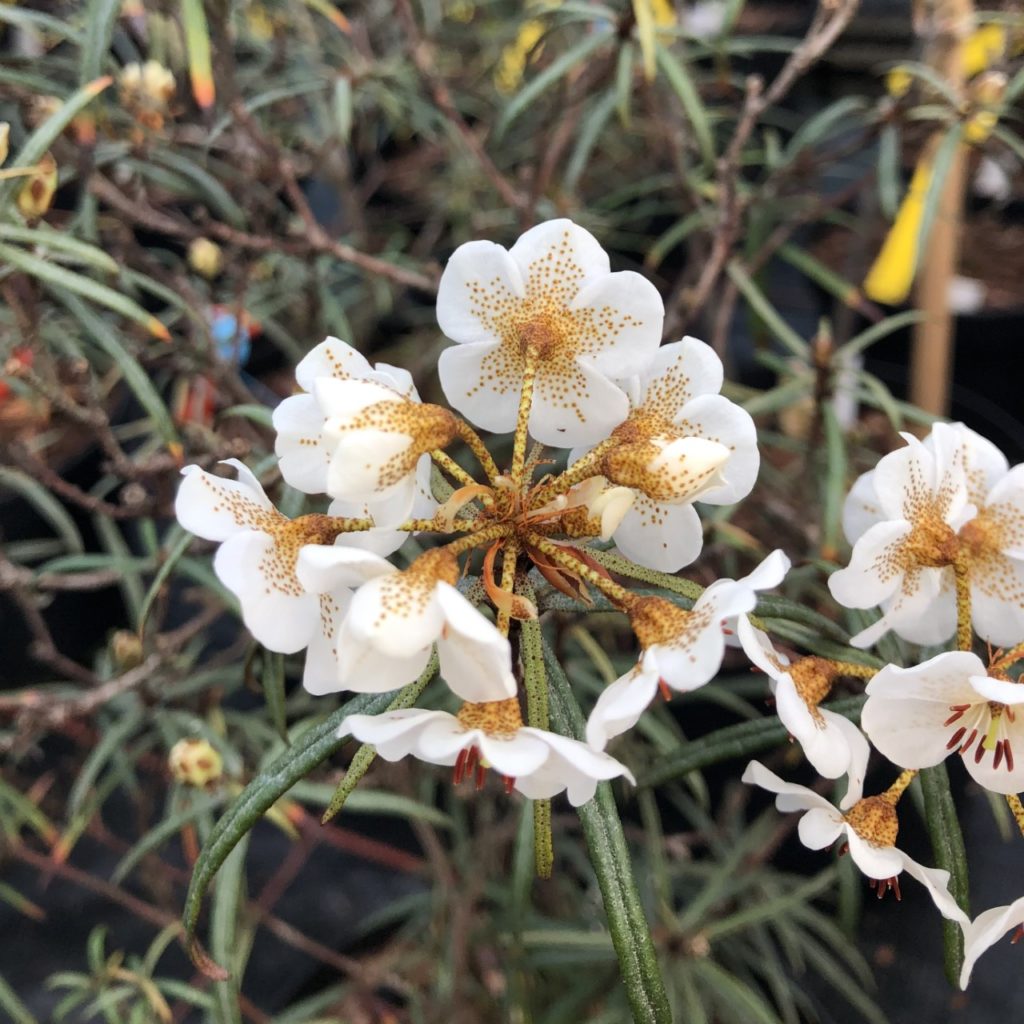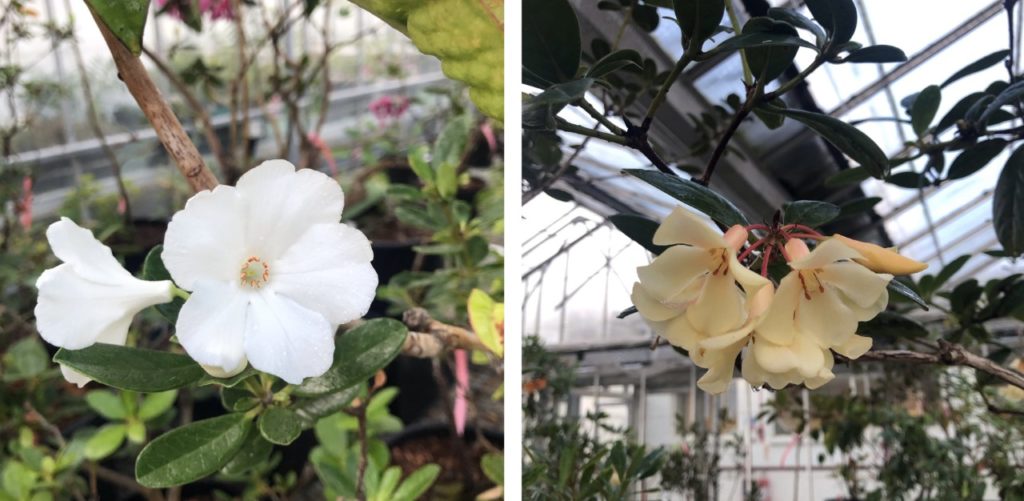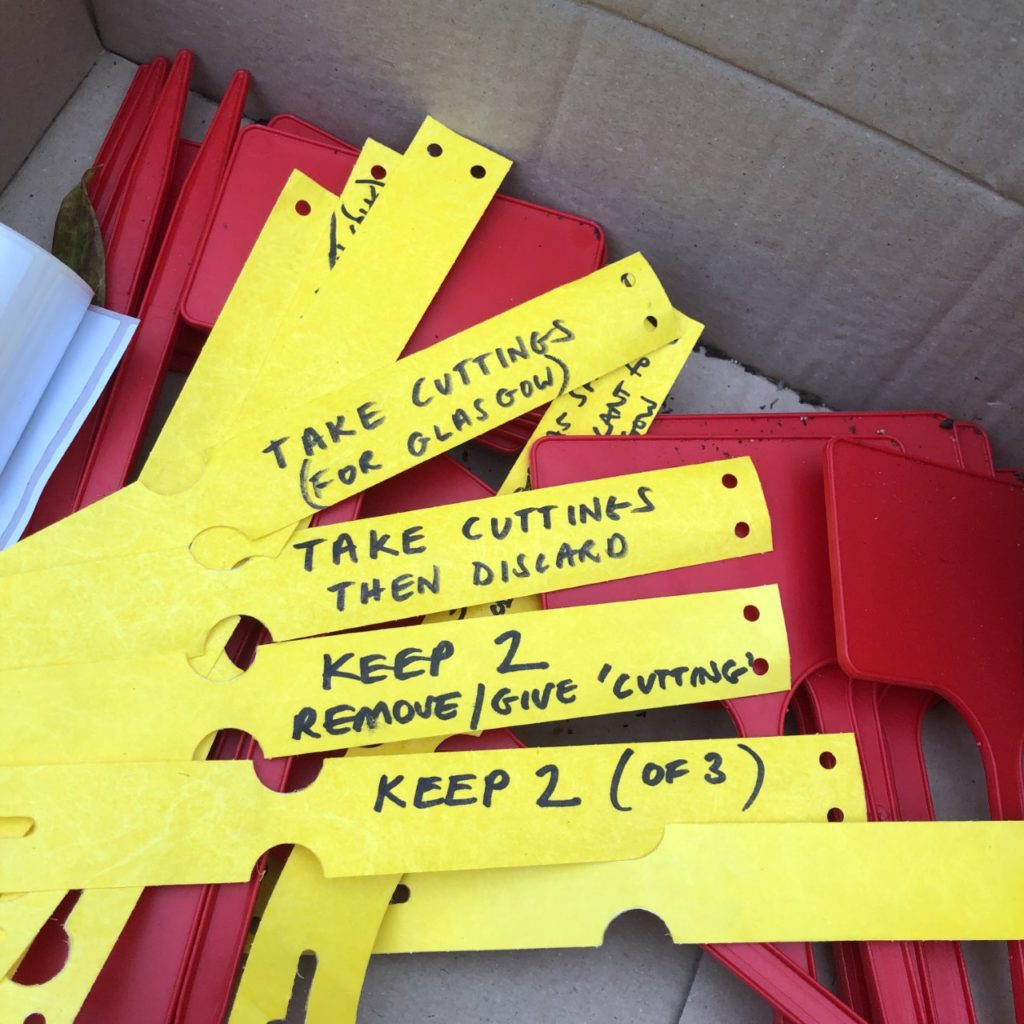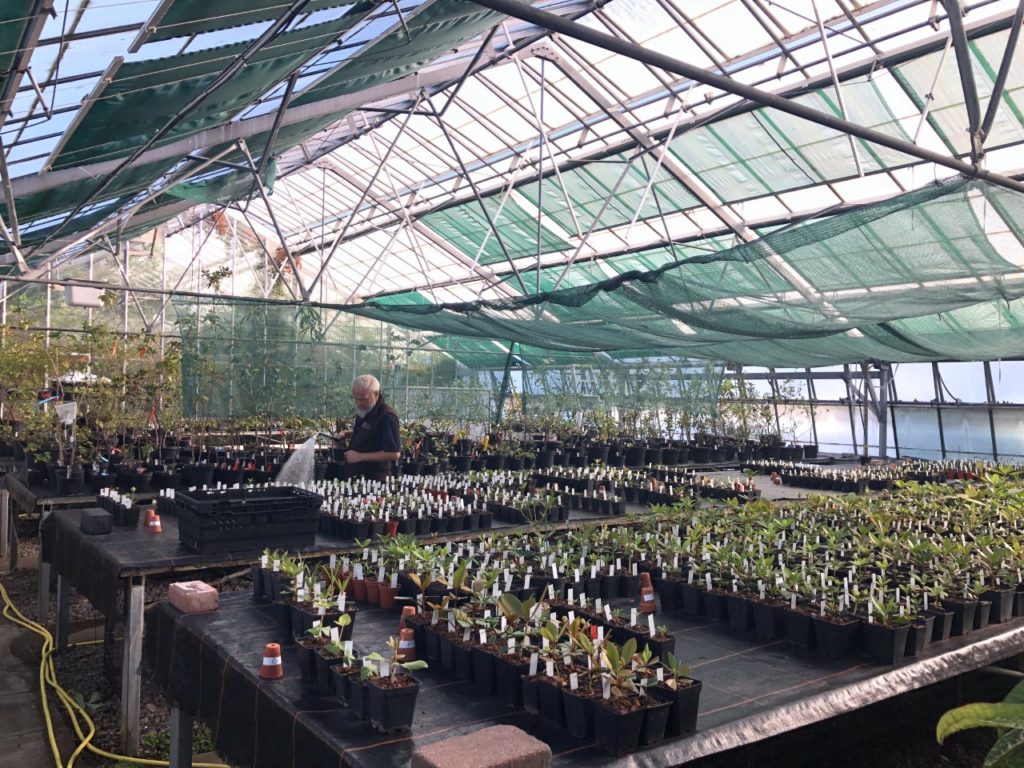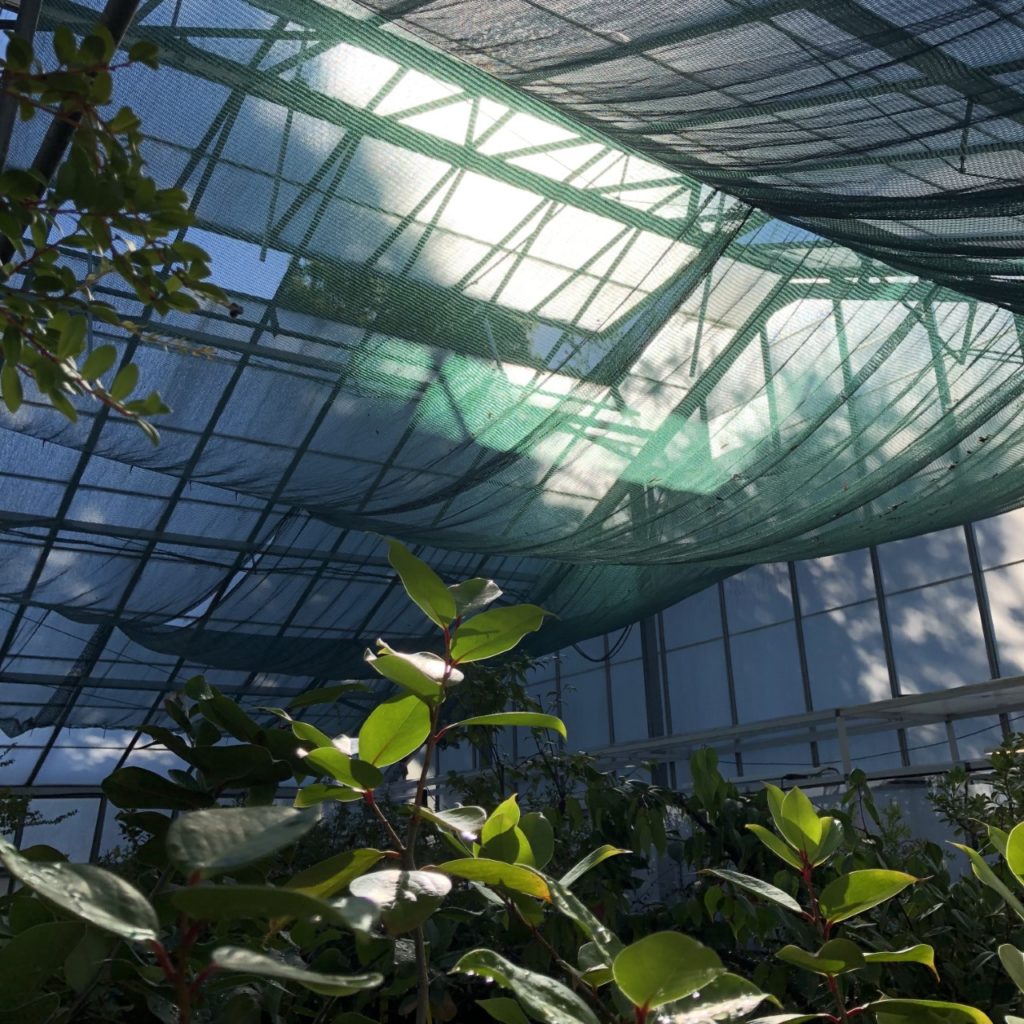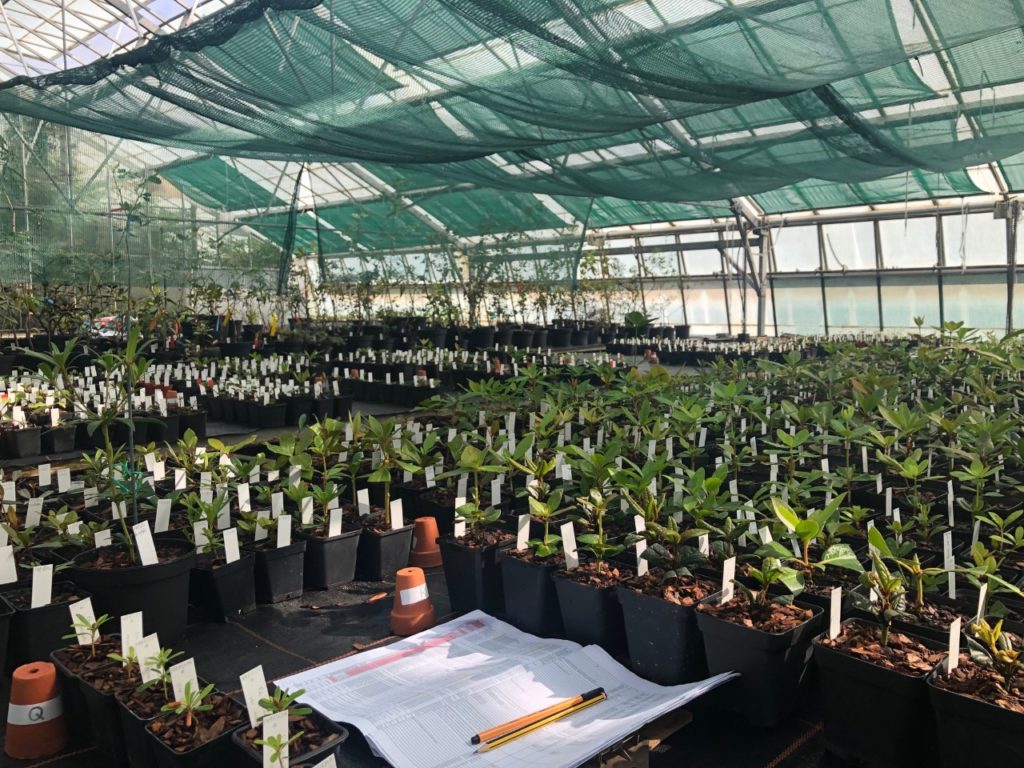
On the south corner of RBGE’s Research Glasshouses sits a zone known as ‘House 19’, which holds a large part of the Ericaceous Research Collection. This research collection is home to plants of Vaccinium, Dimorphanthera, Agapetes and the Vireya Rhododendron collection to name a few. While the Edinburgh Biomes project involves the more noticeable decanting of both Victorian Palm Houses and the Front Range Glasshouses, there are several research collections going through an equally significant change behind the scenes. This collection holds nearly 4,000 plants, including over 250 different species of Vireya Rhododendron, and as part of the Edinburgh Biomes project the entire potted collection has been on the slow move since 2021 to another Glasshouse, just next door.
House 19
With a high number of species in the collection and limited space, some of those species are represented by just one solitary plant, making them extremely vulnerable especially during any relocation. In early 2021, work started on mass repotting of the collection specifically to promote new root growth in some of the older, more fragile plants. In addition to this the team at the time – which included the manager of the collection Horticulturist Steve Willis and then-Biomes Team member (now Head of the International Conifer Conservation Project) Hannah Wilson – began with the construction of heated propagation cases with LED lighting. This allowed them to keep to schedule by promoting the growth of cuttings over the winter months. New plants began to grow, and older plants improved. Overall, this valuable collection became stronger and ready for its move.
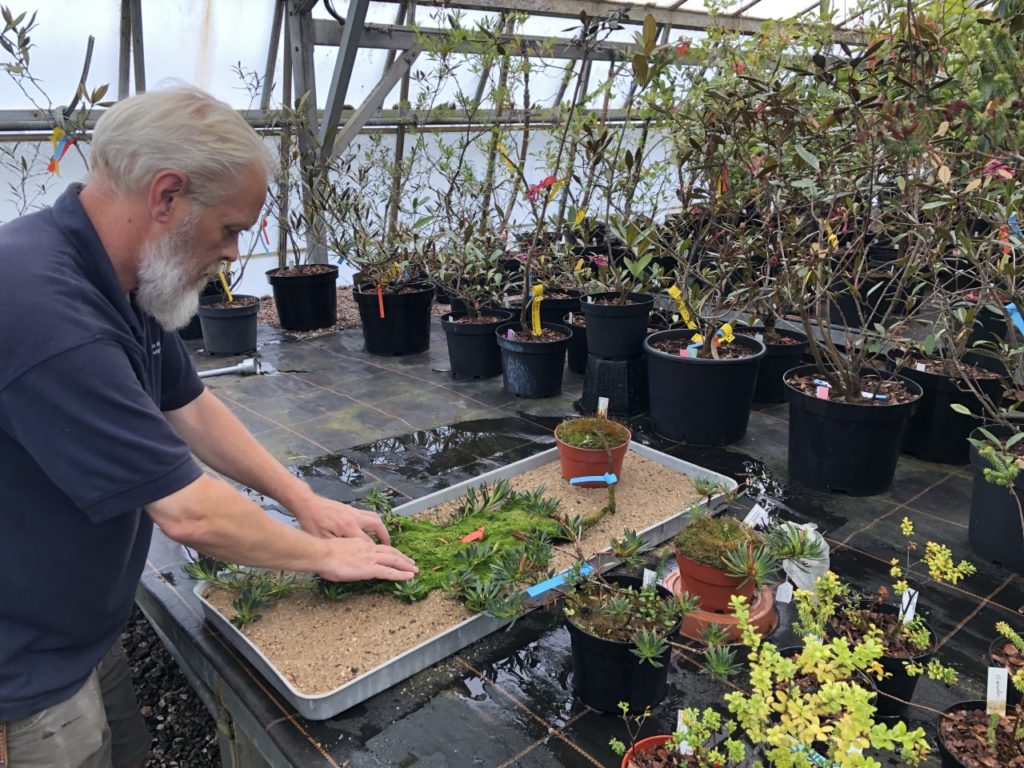
A Variety of Vireyas
RBGE is thought to hold the world’s largest potted collection of Vireya Rhododendron species, native to the mountains of Southeast Asia, with roughly 70% of all known species. Many of these species are threatened in the wild, and RBGE’s plants act as an important ex-situ conservation collection. We have found that successful cultivation of Vireyas requires a shaded, relatively cool glasshouse averaging a minimum night temperate of 13°C, and 15 to 18°C during the day. Since a majority of Vireyas grow as epiphytes in the wild (that is, grow on other plants, usually trees), care of them as a potted collection involves finding a balance in a potting medium and careful routines in watering. While the collection includes various hybrids and historic cultivars from the Veitch nursery such as ‘Princess Alexandra’ it represents a long legacy of invaluable work done by RBGE’s Dr. George Argent throughout the years.
Decide and Divide
While their new Glasshouse is just next door, before they can move each plant goes through a process involving inspection, propagation and seed collection when possible. Starting with a stocktake to evaluate conditions of the collection, the process ultimately results in a focusing and strengthening of the collection by removing excess clones (plants that are genetically identical to one another) and giving the remaining plants the space and attention needed for their long-term survival.
It is a process of elimination based on multiple factors including history of collection, genetic diversity for conservation and research, and their current status in the wild. Additionally, the horticultural team also considers the quality of propagated material already taken, and if it is healthy enough this material can replace older, weaker plants as a method of reducing the footprint of pots within the house. Propagating is helpful in preventing overcrowding while also increasing the number of plants of any endangered species.
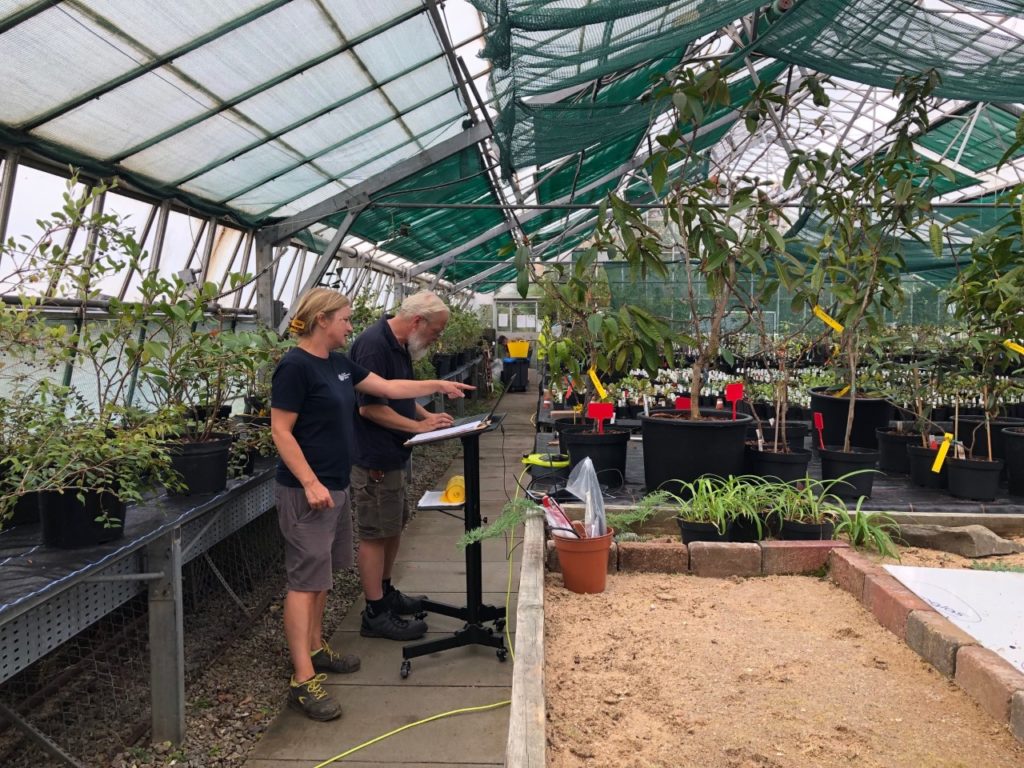
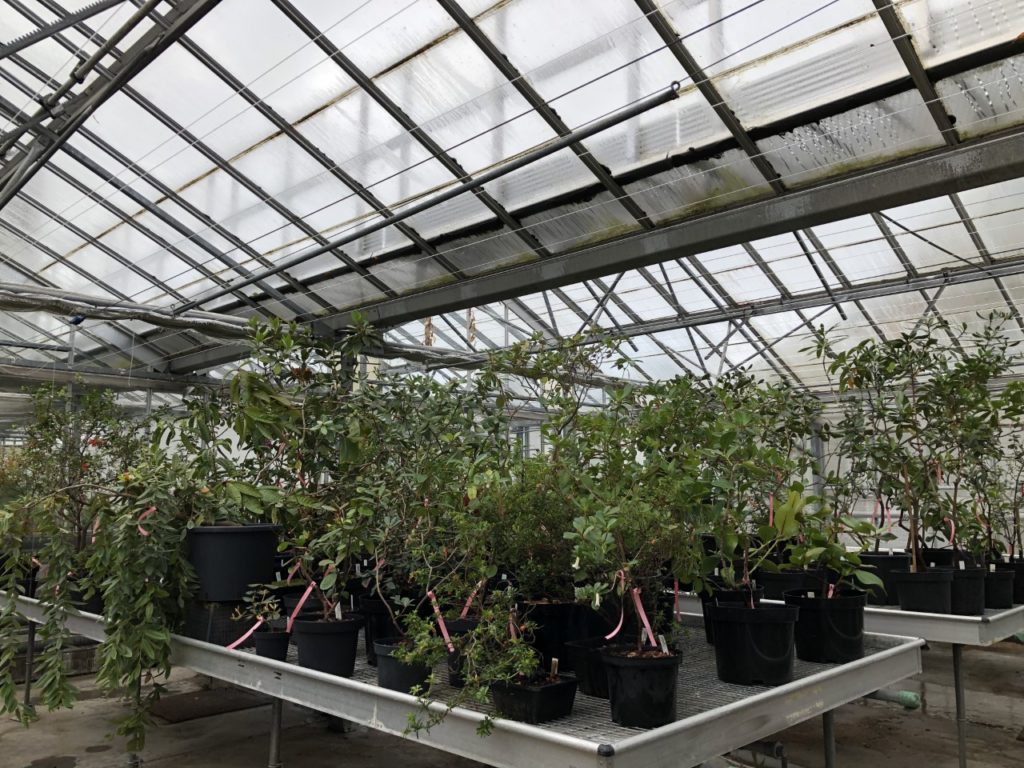
House 21
Plants change the environments around them, and glasshouses are no exception. The moving of this collection triggered the building of propagation tunnels and closed cases lit with LED lighting, as well as some horticultural benching being dismantled and moved. Within a year a glasshouse can change multiple times, season to season becoming unrecognizable to the previous collection it once housed.
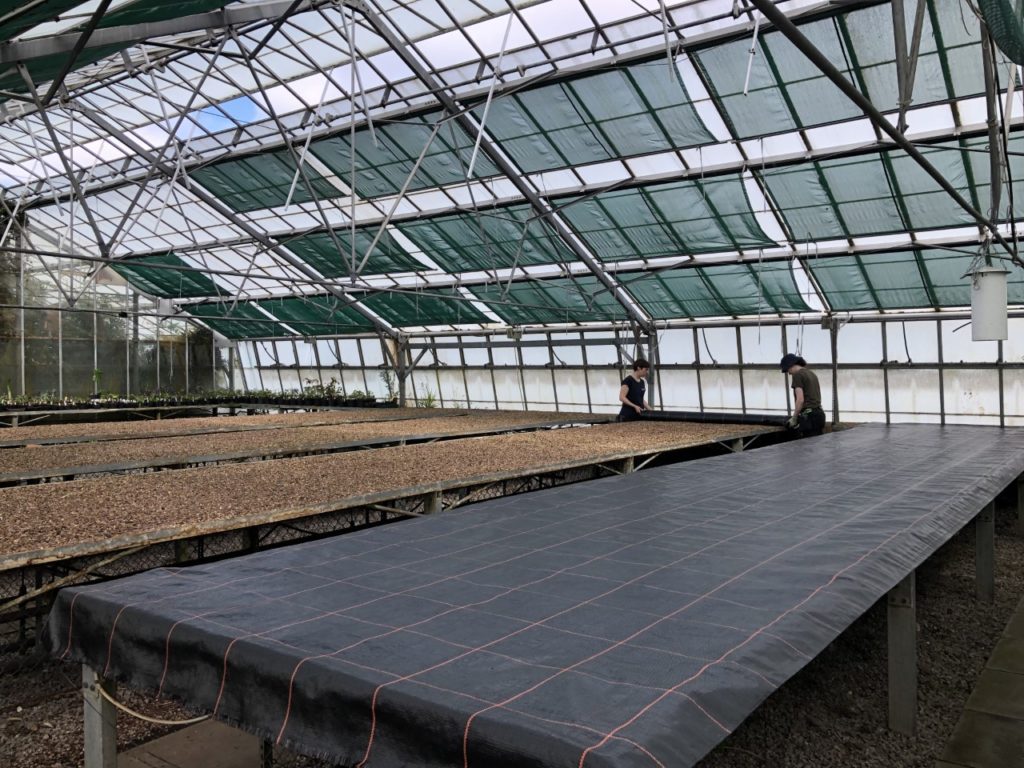
A common challenge with moving any collection is the change of area the plants take up; for example, when lifting larger plants from display glasshouses their footprint often increases, due to them being divided and spread out. When it comes to potted collections moving from one glasshouse to another, it is not a simple ‘cut and paste’ operation. Despite the two glasshouses mirroring each other in layout and design, re-potting and propagation initially cause an increase in space requirements – however once they are healthy enough, the smaller propagules can replace larger plants that would otherwise be dominating bench space.
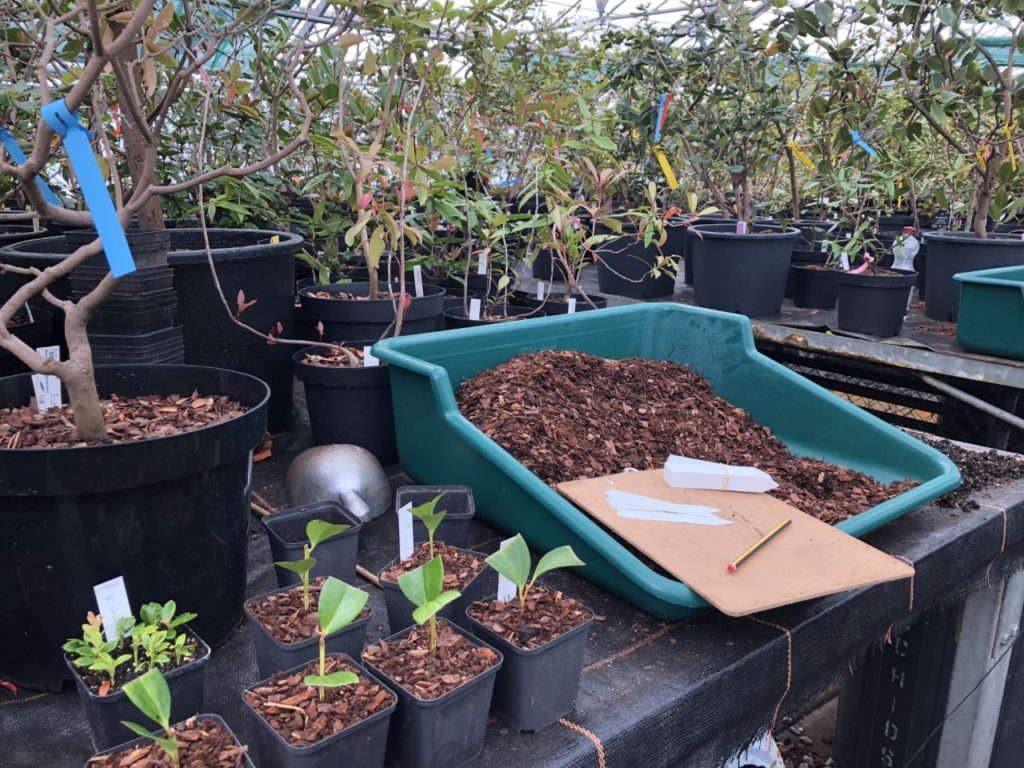
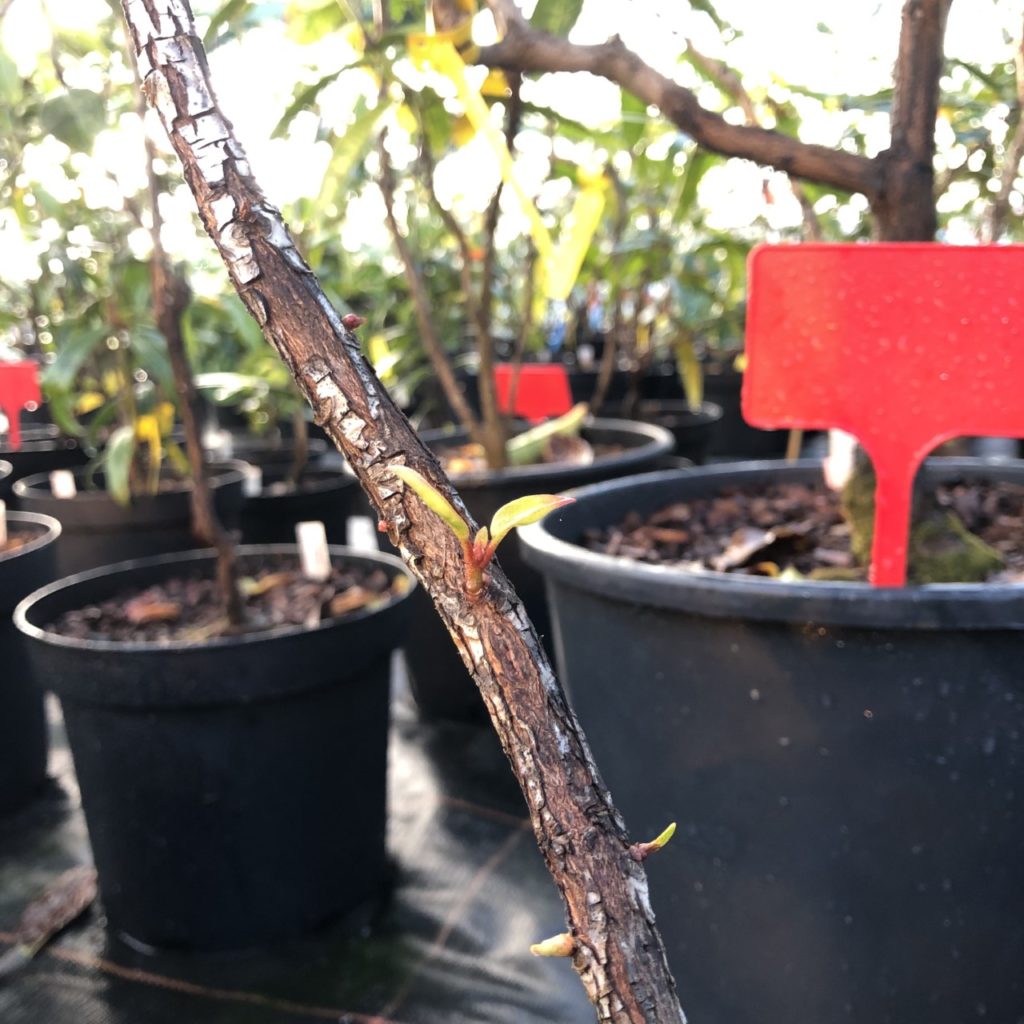
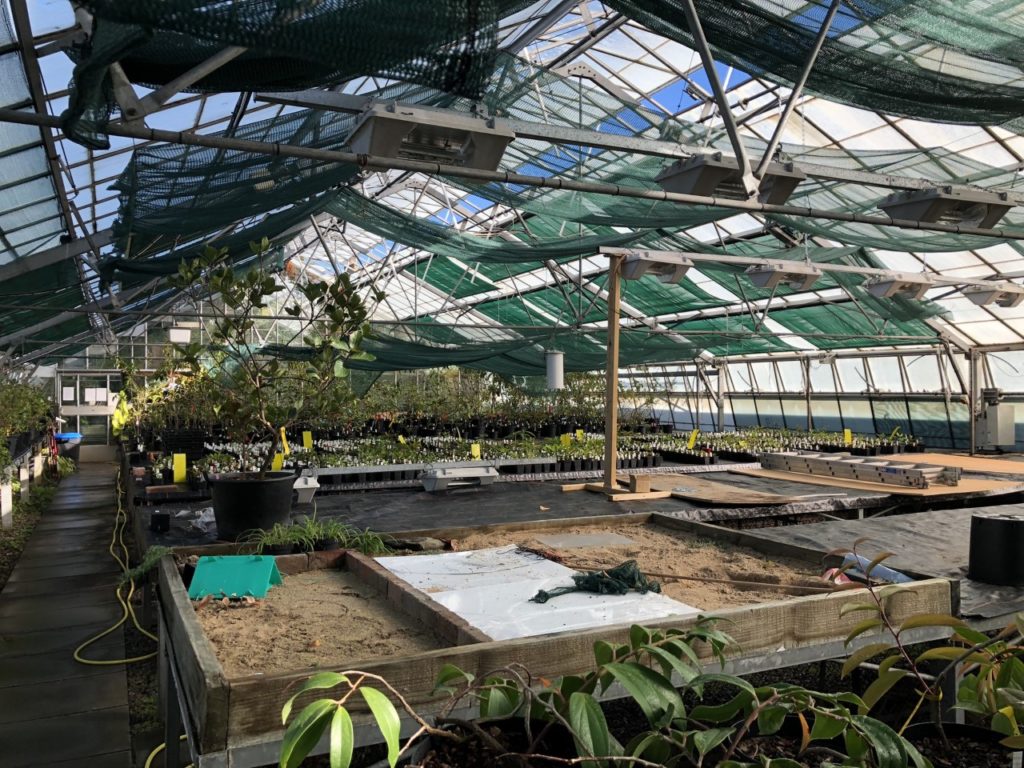
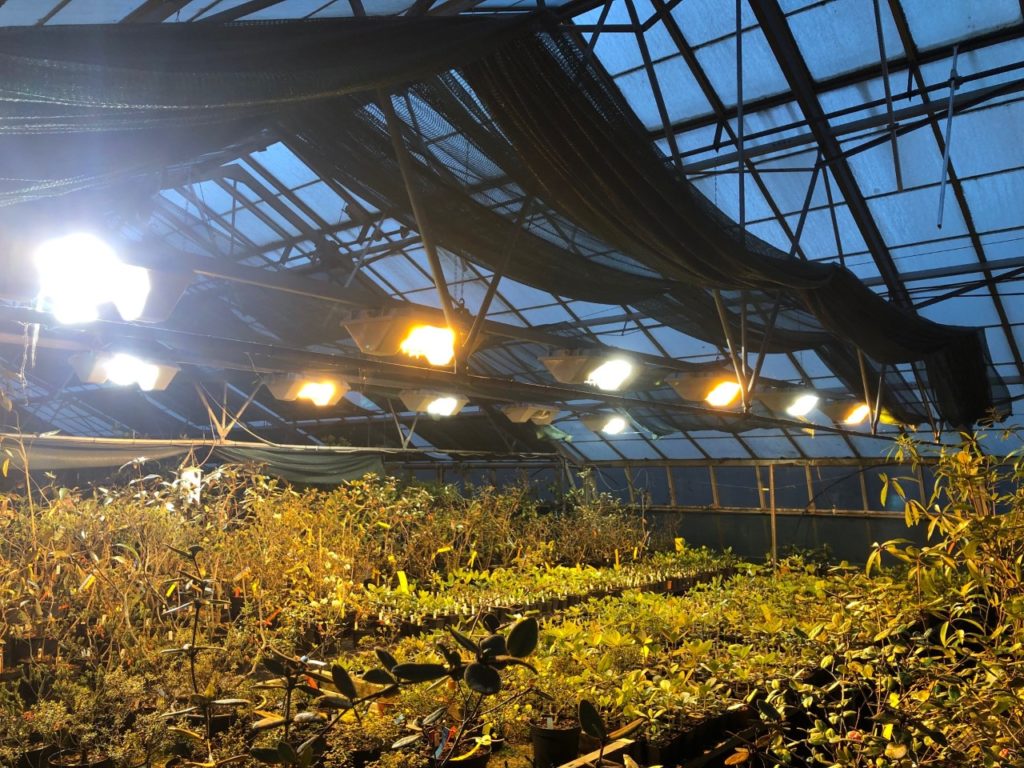
As of November 2022, the move of the Vireya collection is complete. Horticultural benching within House 19 is freed up for part of the backup Temperate Collection to move in; a constant ripple effect that frees space in another area for plants to be lifted, potted and moved along.
From afar, moving a collection can seem as simple as moving pieces on a board, but on the ground, the team is now using this shift of collections to carefully curate the collections and make changes in their care.
The Edinburgh Biomes is a huge and complex project. Being on the ground and involved with the logistics of moving this one collection showed me how large projects often come down to much smaller pieces involving great effort and detail. This move included months of planning and attentive teamwork, all focused on an outcome that benefits the unique living collection that the horticultural team at the Royal Botanic Gardens Edinburgh care for every day.

